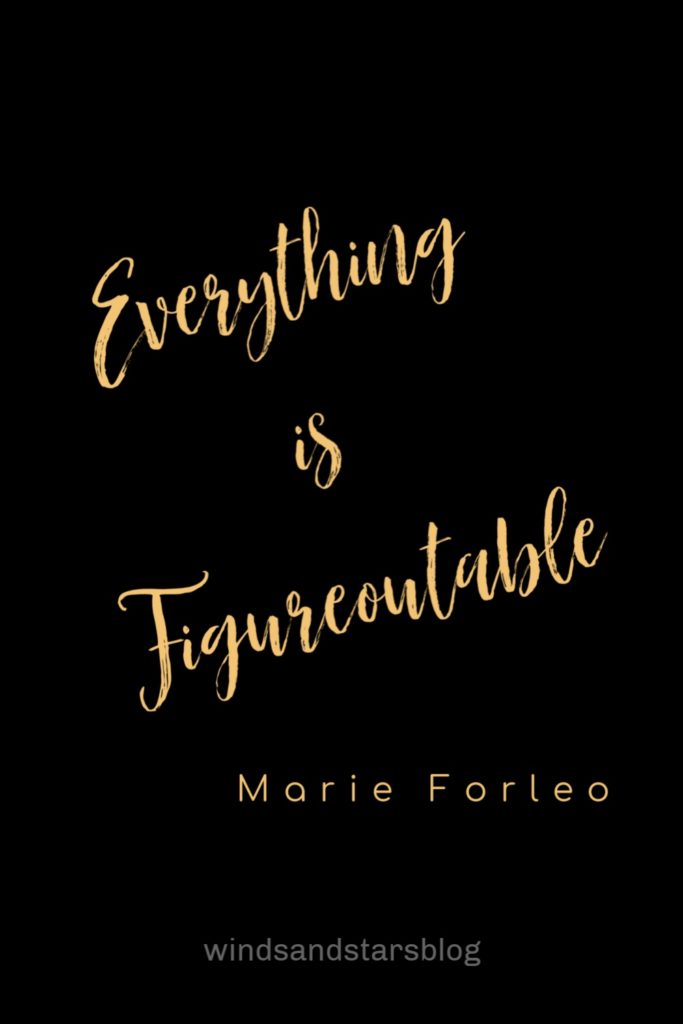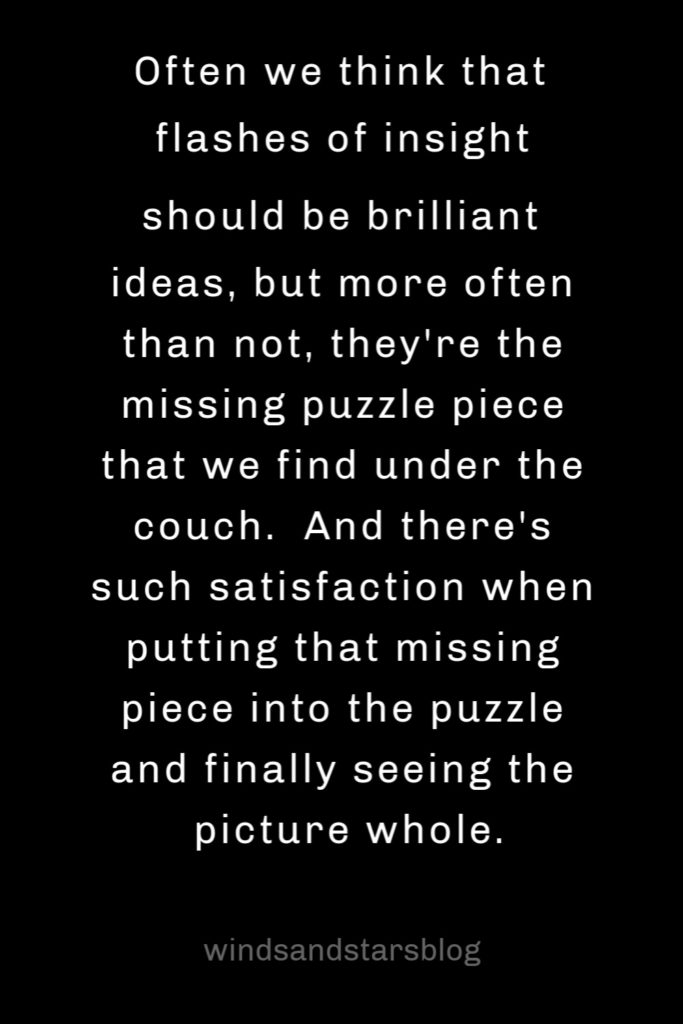You’ve experienced this, right?
You’re teaching someone how to do something and they just aren’t getting it. Finally, you break it down even further and discover that when one very small step that seemed so inconsequential or obvious was revealed, it suddenly illuminated their understanding.
The aha moments
Often we think flashes of insight should be brilliant ideas, but more often than not, they’re the missing puzzle piece that we find under the couch. And there’s such satisfaction putting that missing piece into the puzzle and finally seeing the picture whole. What’s obvious to one person, is not obvious to everyone and that often makes communication and instruction difficult. Especially if people are missing a different piece.
Today I’m sharing my writing journal with you.
Don’t judge me too harshly. I read extensively both fiction and non-fiction. I really can’t imagine a life without reading. So how is it I didn’t know these fundamentals? I have no idea and no defense. Initially, I thought maybe it was because I kept getting so caught up in the story that I couldn’t determine their craft. That’s what every writer wants right? To tell a story so compelling that the reader isn’t aware of the craft and structure that goes into it.
That wasn’t the reason though.
I’m an English major. I studied and discussed craft, and wrote analytical papers dissecting literary works, and wrote poetry and short stories for courses in creative writing. I taught English and writing. I built my units around writing workshops. And I’ve had articles published. All that and I still couldn’t figure out how to write a full-length novel. It eluded me. I understood the concept of the 3 ACT story and character ARCs and plot lines and protagonist/antagonist. I recognized and understood the pieces, but couldn’t find the edges.
When you work on puzzles, do you start with the edges?
I need to see the big picture. How do I fit in the pieces if I don’t have the edges? The pieces of the novel writing puzzle were there. In a big mixed-up pile. But how to go about using them to create a long work of fiction, well, literally puzzled me. As I said in How to Chase Dreams Instead of The Red Queen, there’s no shortage of books on novel writing. I’d read and studied and mapped and thought. All to no avail. I was spinning my wheels and had almost decided that I didn’t have it in me to write a novel. And then I took a step forward and signed up for The Fiction Writer’s Bootcamp.
Which two pieces were missing from the edges of my puzzle?
- Have an idea to explore.
- Choose a protagonist and begin to develop their personality
- Create a ‘team’ of characters whose job it is to help your protagonist
- Flesh it out by envisioning your character interacting with the idea
- Decide who or what is your antagonist? Give them a team too.
- Write in scenes – one point of view and one purpose per scene – plot your scenes – keep your antagonist’s goals in mind because that’s what’s going to create the conflict for your protagonist.
And so I’ve embarked on an exciting learning journey.
The two outside edge puzzle pieces that I found under my proverbial couch are numbers 3 & 6.
- Framing the minor characters as a ‘team’ that helps you reveal the protagonist and move them toward their goal was an aha moment. It clarified what characters I needed to have in my story.
- Discovering that novels are written in scenes was pivotal. That aha moment was like having someone come in to declutter my house for me. Suddenly I could find order. See? I feel so ridiculous for not figuring those out.
I get lost in the details when I can’t see the whole picture.
The 6-point list above is skeletal, but gave me something to put the pieces into. There’s so much more to the process of novel writing, and I’m in no way qualified to teach that process. I’m such a newbie and the learning curve is steep. It’s my Everest and I haven’t even made it to base camp. Heck, I’m still sorting out what tools need to be in my backpack. But! Now that I have the edges, everything else I’m learning, including the books that didn’t make sense to me before, are fitting together.
Learning is not only empowering, it’s energizing and it moves you forward.
So whether you’ve a writer, or a painter, or a musician, or a wanna be something, take the step/s you need to take in order to acquire and/or hone your skill/s. After all, learning is life.

Yes! I want to receive your newsletter.
Simply . . .
P.S. If you’re interested in reading about how to use your antagonist’s goals to help you with your plot line, check out How to Plot a Book: Start With the Antagonist by K.M. Weiland.
P.S.S. If you’re stuck on a project, find the edges.
P.S.S.S. If you have aha moments, help me out and share them below.



